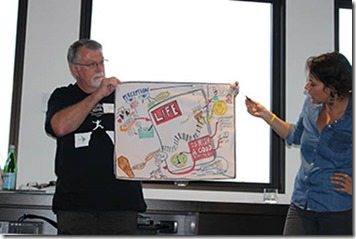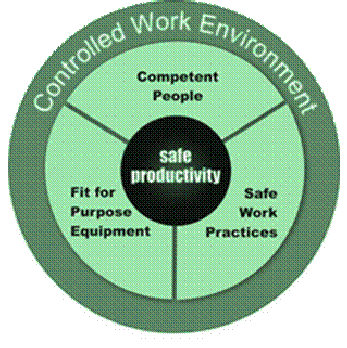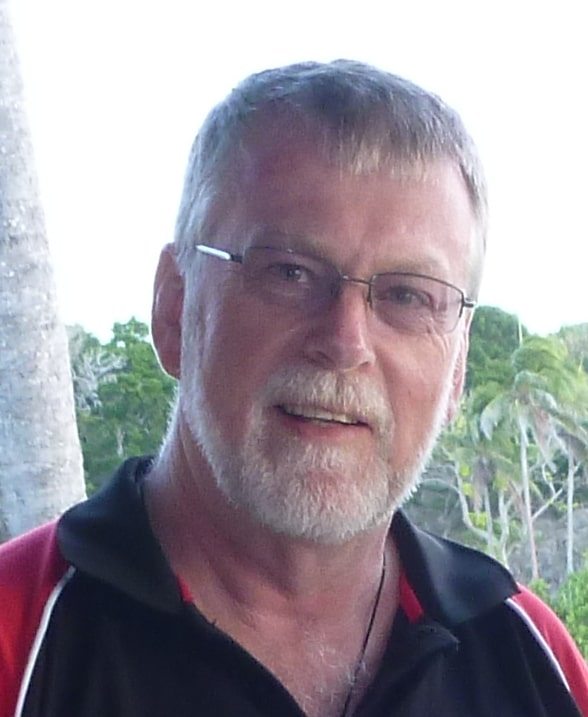I’m excited and honoured to present Max Geyer’s paper from the recent Psychology of Risk Conference held in Sydney.
WARNING: the inbuilt message may disturb some people who are still holding onto the Zero Harm mantra. For others it may provide some ammunition to help counter the binary argument “if you are not for Zero, then you must want to hurt people” .
Perfectionism in Leadership Discourse Part 1
 There is a drive across Australian organisations to set as a goal and “mantra” Zero Harm. Indeed some State governments even espouse it as virtually government Work Health and Safety Policy. The concept and discourse of language such as Zero Harm by an organisation implies the ability to maintain total control of all loss; there would be: no incidents (hits or near hits), no injuries, no production losses, defects or waste; no harm to the environment and no damage to plant and equipment. Such an organisation could justifiably be defined to be a Perfect Organisation; it would be capable of espousing and practising “perfectionism”. In fact one could imagine that only a “perfect organisation” could actually deliver Zero Harm.
There is a drive across Australian organisations to set as a goal and “mantra” Zero Harm. Indeed some State governments even espouse it as virtually government Work Health and Safety Policy. The concept and discourse of language such as Zero Harm by an organisation implies the ability to maintain total control of all loss; there would be: no incidents (hits or near hits), no injuries, no production losses, defects or waste; no harm to the environment and no damage to plant and equipment. Such an organisation could justifiably be defined to be a Perfect Organisation; it would be capable of espousing and practising “perfectionism”. In fact one could imagine that only a “perfect organisation” could actually deliver Zero Harm.
At the recent Psychology of Risk Conference held in Sydney, I delivered a presentation aimed at delving into the possibility that a perfect organisation could exist and then examined what the potential would be for that “perfect organisation” in terms of delivering on the absolutist mantra of Zero Harm.
What follows in this 2 Part Series is a logical process which examines whether, if an organisation was actually capable of practicing perfectionism, could it in fact deliver Zero Harm and hence see if Zero Harm is logically possible.
The American Psychological Association (APA) provides the following definitions for perfect, perfection and perfectionism:
· Perfect is ‘entirely without any flaws, defects, or shortcomings’;
· Perfection is ‘a perfect embodiment or example of something’; and
· Perfectionism is ‘a personal standard, attitude, or philosophy that demands perfection and rejects anything less’ (APA, 2014).
For the Perfect Organisation, the language and the practice of Zero Harm would mean that all flaws, defects, or shortcomings would be totally unacceptable. Such an organisation could not accept any person who was not perfect, or any practice which could produce harm; harm directly to a person in the form of workplace injuries or illnesses, or harm to the environment caused by damage or waste, or harm to the organisation by the production of defects, financial losses and/ or the organisation failing.
Most safety people and many others will have heard of the colloquially named ‘Nertney Wheel’. It is often used as a useful model to describe the structures required to support the usual activities of an organisation and I use it to provide a map and the grammar for our examination. A simplified version of the Nertney Wheel, demonstrated by Knowles (1998, p. 18) identifies five components: ‘Safe Production, Competent People, Fit for Purpose Equipment, Safe Work Procedures and Controlled Work Environment’ similar to the model here.
For the Perfect Organisation this model could be adapted as follows:
· Perfect People, employing;
· Totally Reliable and Useable Systems, using;
· Totally Reliable Equipment, in a;
· A Perfect Work Environment, to produce;
· Zero Harm Production.
Here in Part 1 we will look at “Perfect People” and following on in Part 2 will look in turn at “Totally Reliable and Useable Systems”; “Totally Reliable Equipment”; the “Perfect Work Environment” and then “Zero Harm Production”, so that we can see where the language of leadership, which espouses perfectionism, takes us.
So, addressing the Perfect People component first; in order for the organisation to deliver perfection, the Perfect Organisation would be populated by perfectionists. To do less than this would mean that the organisation would be capable of accepting less than perfection from its people and hence be exposed to the risk of a loss i.e. not zero harm.
It could be argued that to have an organisation, filled with perfectionists would be ideal as it could mean that the workforce would be highly motivated to only do their very best at all times, and to persevere where all others may give up in the face of difficulties and opposition. Indeed Roedell (1984, p. 128) claims:
In a positive form, perfectionism can provide the driving energy which leads to great achievement. The meticulous attention to detail, necessary for scientific investigation, the commitment which pushes composers to keep working until the music realises the glorious sounds playing in the imagination, and the persistence which keeps great artists at their easels until their creation matches their conception all result from perfectionism.
It would appear that an organisation filled with perfectionists could excel at everything, ultimately out performing all competition and be admired as the perfect business model.
However, Flett and Hewitt (2002, pp. 5-31) highlight a large number of studies performed by researchers which point out that there are many mental and physical health problems associated with perfectionism including: bipolar disorder, disillusionment, heartache, self-hatred, anxiety, depression, suicide, violence and eating disorders[1]. Further discussion, in following chapters (of Flett and Hewitt), includes the difficulties confronted by psychologists when treating perfectionists and the contention that the treatment of perfectionists is actually exacerbated by the condition itself. In discussion about his treatment of perfectionists, Ellis (2002, pp. 227-228) concludes:
… that compared with nonperfectionists, perfectionists have… a long-term habit of perfectionistic thinking, feeling, and behaving that resists short-term change. For these reasons, they frequently are difficult customers, who can use intensive, prolonged therapy.
Sorotzkin (cited in Flett and Hewitt 2002, p. 25) also explains that perfectionists hide their problems and cover their anxieties, conflicts or fears by striving to become perfect emotional specimens. Perfectionists hide their illness because that can’t be seen as ill as that would be them admitting and exposing that they were not perfect.
When leadership discourse objectifies risk and espouses the elimination of risk, we place increased pressure on people to work in a state of increasing cognitive dissonance[2]. People instinctively know that it is impossible to eliminate all risk. For a perfectionist, who is charged with the task of eliminating risk, the drive to be perfect, to deliver perfection and to meet their performance measures, can result in people working excessive hours, increasing fatigue levels and increasing the build up of stress, ultimately increasing the risk of mental health issues and a potential breakdown.
It follows that a perfectionist organisation would at some stage be required to treat this situation and to provide their perfectionists employees with medical or mental health assistance to deal with this health issue. The organisation would be obliged to ensure that their people were provided with suitable, potentially prolonged and difficult treatment and rehabilitation, which obviously would have to be recorded as at least Medically Treated Injuries, more likely Lost Time Incidents. By definition this would mean that, as the harm had been caused by the organisation insisting on perfection, it would fail as a Zero Harm organisation.
Logic again dictates three potential treatment outcomes, i.e. the person can: return to pre injury duties in their perfectionist state; be cured of their perfectionism; or, be not cured and remain incapacitated. Let’s look at how this may work.
Let’s assume firstly that the person responds positively to treatment; they are able to develop coping mechanisms and go back to work. They are back to their “old selves”. This should be good news but logically given that their old self included their perfectionism and perfectionist behaviours, their original illness “perfectionism” is re-established. This then sets up a scenario for a potential relapse and further harm.
Alternatively the person has their perfectionism cured; i.e. they become not perfect. This means that the person would be capable of making a mistake. By definition this would make them unsuitable for employment in the perfectionist organisation. They would have to be terminated. This would cause waste – wasted time and money employing a replacement.
The third alternative is that the treatment is ineffective; the person cannot be cured of their perfectionism; they would remain as a permanently disabled person.
It appears that if we have Perfect People practicing perfectionism, we are increasing the likelihood that we will eventually have an incident. The discourse of the leaders, who espouse the practice of perfectionism, becomes the source of harm to their people. It would appear that we cannot have a Zero Incident workplace even if we have perfect people.
In Part 2 (see here) will look in turn at “Totally Reliable and Useable Systems”; “Totally Reliable Equipment”; the “Perfect Work Environment” and “Zero Harm Production” with the aim of seeing if a perfect organisation can exist and support zero harm.
Author: Max Geyer
E-mail: max@viamaxconsulting.com
Web: www.viamaxconsulting.com
A Bibliography follows Part 2.
[1] Perfectionism is a noted characteristic of a number of personality disorders as described in the Diagnostic and Statistical Manual of Mental Disorders, Fifth Edition (DSM 5) and its companion Guide Selecting Effective Treatments : A Comprehensive, Systematic Guide to Treating Mental Disorders (4th Edition).
[2] Festinger (1957) tells us that:
… when inconsistency (dissonance) is experienced, individuals tend to become psychologically uncomfortable and are motivated to attempt to reduce this dissonance, as well as actively avoiding situations and information which are likely to increase it.




Do you have any thoughts? Please share them below